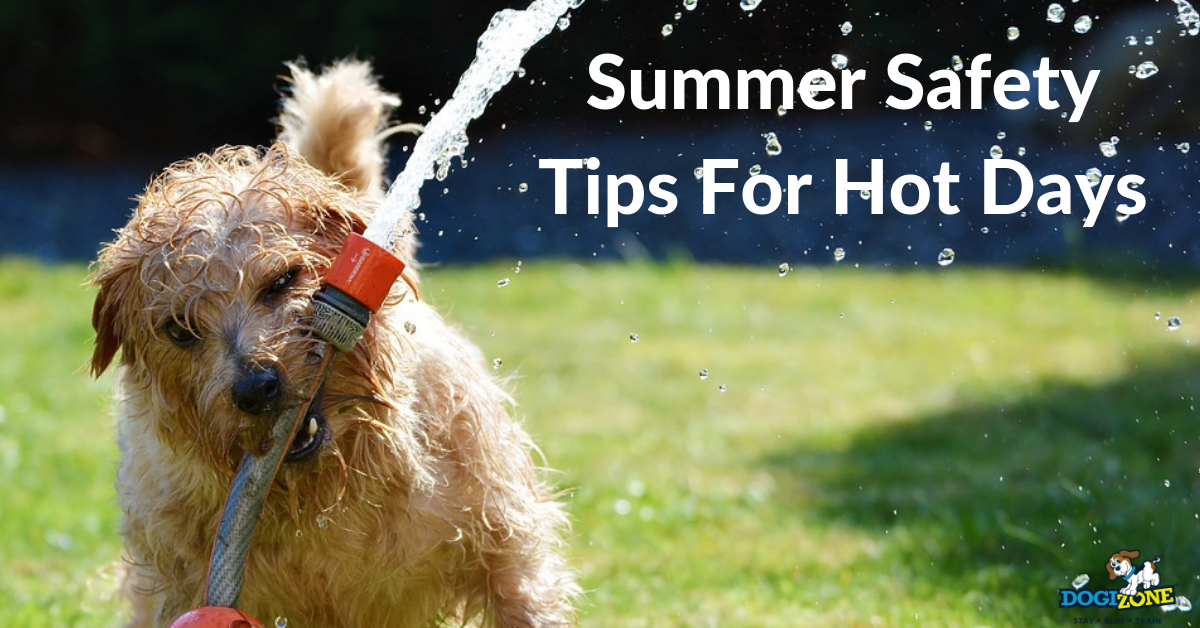Summer Safety Tips For Hot Days
Summer Safety Tips for Hot Days

Dogs are very adept at keeping their body temperature regulated through panting and staying quiet in a shady place in the heat of the day. However, dogs are also very social animals, and if the family is out and about and playing, walking, or even working in the yard, the dogs are going to stay active as well. They are also happy to go to the dog park and run around in the hot weather, which poses a significant risk of heat exhaustion or heat stroke.
Also known as hyperthermia, heatstroke is a potentially life-threatening condition in any breed or type of dog. It can occur much faster in dogs that are brachycephalic, or those that have a flat face. Brachycephalic dogs include Pugs, Bulldogs, Boston Terriers, Pekingese, Boxers, Shih Tzus, Lhasa Apsos or other dogs with a very short nose.
Brachycephalic dogs are more susceptible to heat stroke due to their short nasal passages. This, combined with respiratory problems experienced with these breeds or mixed breed dogs, does not provide the cooling off of the air coming into the body, reducing the ability to maintain the correct core temperature. Rather than cooling, the combination of the heat and the respiratory issue causes the body cored temperature to rise.
Even in breeds of dogs that are not Brachycephalic, this same issue can happen when the dog is exercising or exposed to high temperatures. Obese dogs, older dogs, or very young puppies are also at higher risk of heatstroke. This is why leaving a dog in a vehicle in the summer is such a serious issue. The dog cannot pant fast enough to cool the body temperature, which allows the temperature to spike quickly, resulting in the immediate onset of the symptoms of heatstroke.
Early Symptoms
The first signs of heatstroke in dogs can be easy to miss if the owner is not watching carefully. They include:
- Excessive panting and drooling
- Extremely red or more of blue color to the gums and tongue
- Confusion and lack of response
- Lack of coordination
- Rapid heart rate
- Collapse and convulsions
- Vomiting or diarrhea
Immediate Care Required
At the first sign of any of these issues, immediately get the dog into a shady area or in an air-conditioned home or vehicle. A fan can also be used to provide a cooling effect for the dog.
If available, use a rectal thermometer to check the dog’s temperature. It will be between 103 and 106 degrees Fahrenheit if the dog has heat exhaustion, and above 106 is considered heat stroke and very serious with potential the potential to be fatal. Call your vet immediately and follow the directions provided.
If you cannot contact the vet, work to cool the dog down slowly. Damp cloths can be placed on the dog’s neck, chest, and on the abdomen. The pads of the feet can also be cooled with damp cloths. If the dog is alert and able to walk, wading in shallow water can be effective, but stay with the dog and keep the dog out of the direct heat of the sun.
Let the dog drink if he or she wants, but do not force water. Never use ice cubes or ice packs as this can cool the dog down too rapidly, leading to further complications if the dog goes into shock.
Transport the dog to the vet as soon as possible. With high temperature and high humidity conditions, heatstroke can occur in a short period of time and, if left untreated, can result in body systems shutting down.

